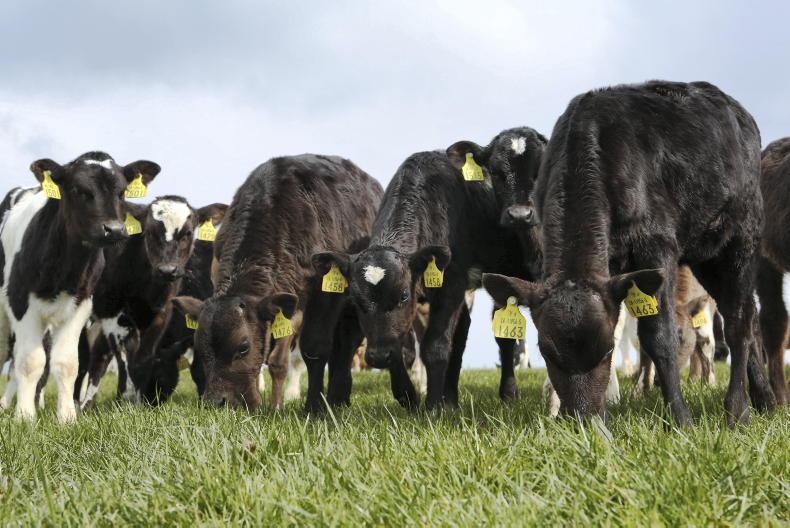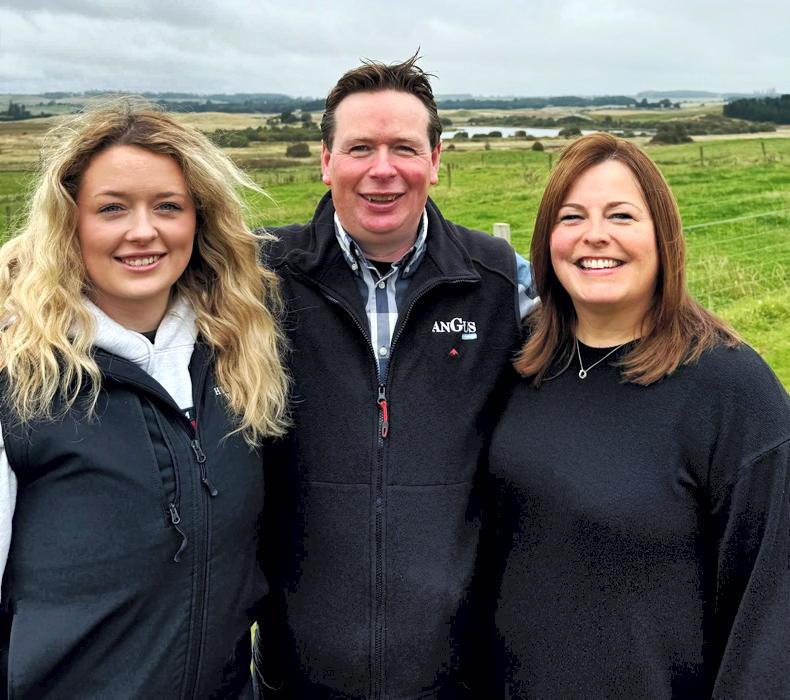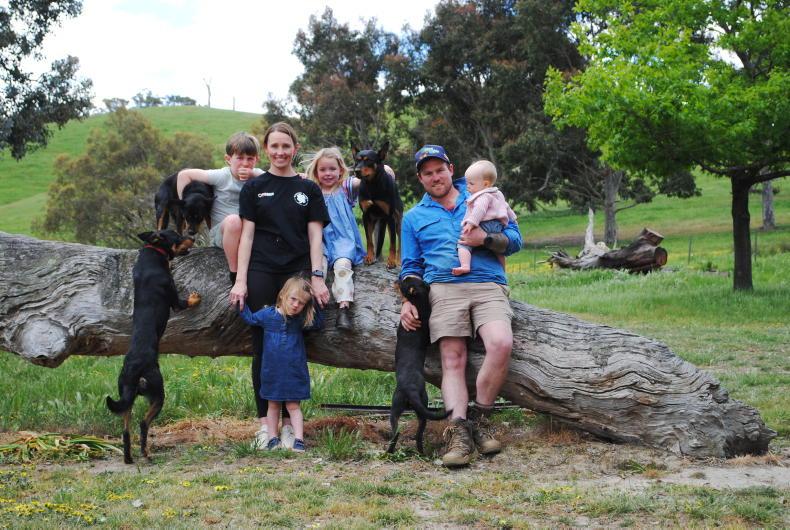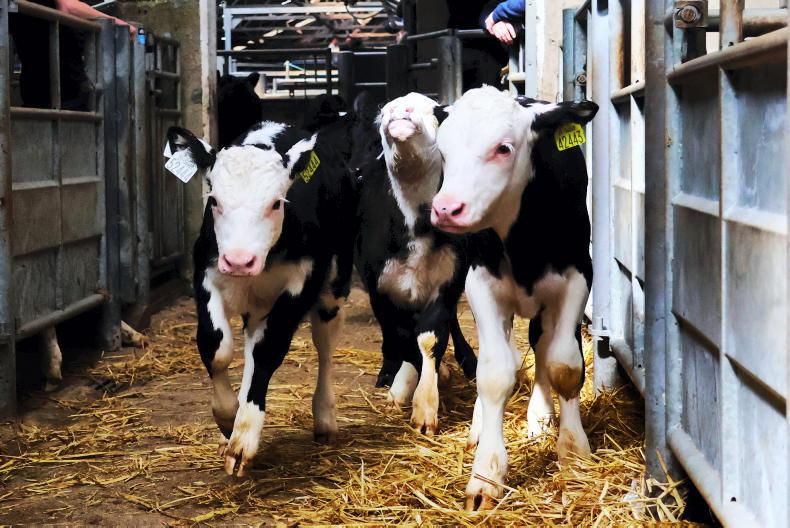New data released by the Irish Cattle Breeding Federation (ICBF) shows continued growth in the dairy sector.
Cow number analysis over the past 10 years shows that dairy cow numbers have increased by 40%. This now puts the national dairy herd at over 1.603m, up from 1.144m in 2012.
Much of this growth, as expected, came from 2015 onwards with the abolition of milk quotas. The year of abolition shows figures just shy of 1.3m head of dairy cows.
From this figure, the national herd has grown by 27% in the past seven years.
These numbers were taken on 1 June each year, and show dairy cow numbers increased by 2.3% in the final 12 months.
With dairy cow numbers increasing, beef cow numbers have seen a drop. Over the same 10-year period, beef cow numbers have seen a drop of 17%. Standing at 1.132m in 2012, this figure dropped below the million mark in 2019 and now stands at just shy of 937,000.
While it looked to have stabilised in 2020, last year’s drop of 4.56% comes as the biggest drop since 2014.

The number of suckler cows saw its biggest drop since 2014. \ Philip Doyle
Breed breakdown
The ICBF also provided figures for the makeup of the national herd by breed. This is based on sire of calves born so total numbers are slightly less, given every cow isn’t calving every 365 days and a percentage of unknown sires. Unlike the cow figures which are taken on the 1 June, the breed breakdown figures are based on the entire year of 2020 – as this is the most recent available.
If we look at the market share of all calves born, unsurprisingly, the Holstein Friesian breed comes out on top, siring 32% of all calves born in Ireland. This increase is very much in line with the growth of the national dairy herd.
Given numbers of dairy cows in production have stabilised somewhat the likelihood of this percentage decreasing significantly is still very low as dairy farmers aim for that 15% replacement rate.
If we look at the beef side of the house, we can see that both the Angus and Limousin breeds sire 17% each of all calves.
While percentage break up is the same, the Angus breed actually registered 10,000 more calves than the Limousin breed. This resulted in Angus siring 408,283 calves in 2020.
If we break this down, we can see 316,974 of these Angus calves come from dairy dams. This puts Angus as the beef breed of choice for dairy dams – siring 45% of all calves.
The second most popular beef breed for dairy dams is the Hereford which sired 228,687 or 33% of all beef calves from the dairy herd.

Numbers of dairy beef sired calves continue to increase. \ Donal O'Leary
Third is the Limousin breed at 10%. Driving the Limousin breed to 17% of all calf registrations is its market share in the national beef herd. Here, the breed has the highest percentage of all breeds at 39%. This equates to over 326,000 Limousin sired calves from the beef herd.
Siring 34% of all calves from the beef herd was the Charolais breed, with over 287,000 calves.
Then the Angus breed were back in action securing 10% market share in the national beef herd also.
Comparison with previous years
When you look back at previous years’ data it is clear to see that traditional breeds are performing much better than their continental counterparts.
This is very much expected given the traditional breeds’ heavy usage in the dairy herd and the national dairy herd continuing to grow.
Since the abolition of milk quota in 2015, Angus-sired calf registrations have increased by nearly 90,000 in six years. Similarly, if we look at the Hereford breed, registrations have increased substantially. Hereford-sired calves jumped from 190,000 in 2015 to over 265,000 in 2020.
However, where we look at breeds predominantly associated with the national beef herd, numbers have dropped.
Charolais-sired calves
Charolais-sired calves saw a drop from 362,000 in 2015 to just shy of 305,000 in 2020.
While not as significant given its role in the dairy herd also, Limousin-sired calves still dropped by 18,000 since 2015.
New data released by the Irish Cattle Breeding Federation (ICBF) shows continued growth in the dairy sector.
Cow number analysis over the past 10 years shows that dairy cow numbers have increased by 40%. This now puts the national dairy herd at over 1.603m, up from 1.144m in 2012.
Much of this growth, as expected, came from 2015 onwards with the abolition of milk quotas. The year of abolition shows figures just shy of 1.3m head of dairy cows.
From this figure, the national herd has grown by 27% in the past seven years.
These numbers were taken on 1 June each year, and show dairy cow numbers increased by 2.3% in the final 12 months.
With dairy cow numbers increasing, beef cow numbers have seen a drop. Over the same 10-year period, beef cow numbers have seen a drop of 17%. Standing at 1.132m in 2012, this figure dropped below the million mark in 2019 and now stands at just shy of 937,000.
While it looked to have stabilised in 2020, last year’s drop of 4.56% comes as the biggest drop since 2014.

The number of suckler cows saw its biggest drop since 2014. \ Philip Doyle
Breed breakdown
The ICBF also provided figures for the makeup of the national herd by breed. This is based on sire of calves born so total numbers are slightly less, given every cow isn’t calving every 365 days and a percentage of unknown sires. Unlike the cow figures which are taken on the 1 June, the breed breakdown figures are based on the entire year of 2020 – as this is the most recent available.
If we look at the market share of all calves born, unsurprisingly, the Holstein Friesian breed comes out on top, siring 32% of all calves born in Ireland. This increase is very much in line with the growth of the national dairy herd.
Given numbers of dairy cows in production have stabilised somewhat the likelihood of this percentage decreasing significantly is still very low as dairy farmers aim for that 15% replacement rate.
If we look at the beef side of the house, we can see that both the Angus and Limousin breeds sire 17% each of all calves.
While percentage break up is the same, the Angus breed actually registered 10,000 more calves than the Limousin breed. This resulted in Angus siring 408,283 calves in 2020.
If we break this down, we can see 316,974 of these Angus calves come from dairy dams. This puts Angus as the beef breed of choice for dairy dams – siring 45% of all calves.
The second most popular beef breed for dairy dams is the Hereford which sired 228,687 or 33% of all beef calves from the dairy herd.

Numbers of dairy beef sired calves continue to increase. \ Donal O'Leary
Third is the Limousin breed at 10%. Driving the Limousin breed to 17% of all calf registrations is its market share in the national beef herd. Here, the breed has the highest percentage of all breeds at 39%. This equates to over 326,000 Limousin sired calves from the beef herd.
Siring 34% of all calves from the beef herd was the Charolais breed, with over 287,000 calves.
Then the Angus breed were back in action securing 10% market share in the national beef herd also.
Comparison with previous years
When you look back at previous years’ data it is clear to see that traditional breeds are performing much better than their continental counterparts.
This is very much expected given the traditional breeds’ heavy usage in the dairy herd and the national dairy herd continuing to grow.
Since the abolition of milk quota in 2015, Angus-sired calf registrations have increased by nearly 90,000 in six years. Similarly, if we look at the Hereford breed, registrations have increased substantially. Hereford-sired calves jumped from 190,000 in 2015 to over 265,000 in 2020.
However, where we look at breeds predominantly associated with the national beef herd, numbers have dropped.
Charolais-sired calves
Charolais-sired calves saw a drop from 362,000 in 2015 to just shy of 305,000 in 2020.
While not as significant given its role in the dairy herd also, Limousin-sired calves still dropped by 18,000 since 2015.











SHARING OPTIONS